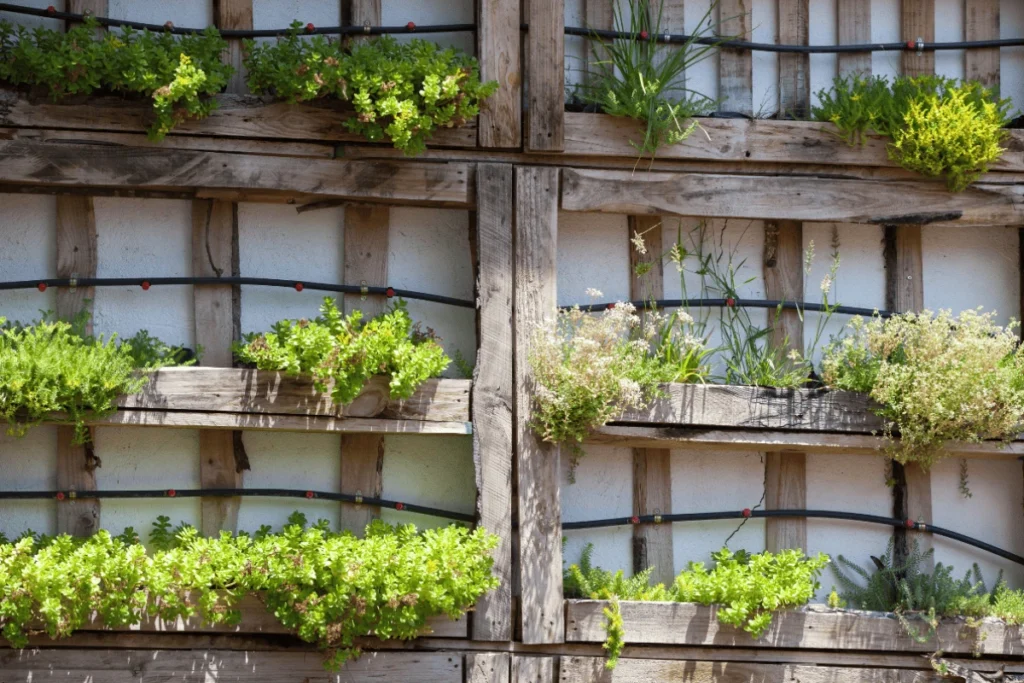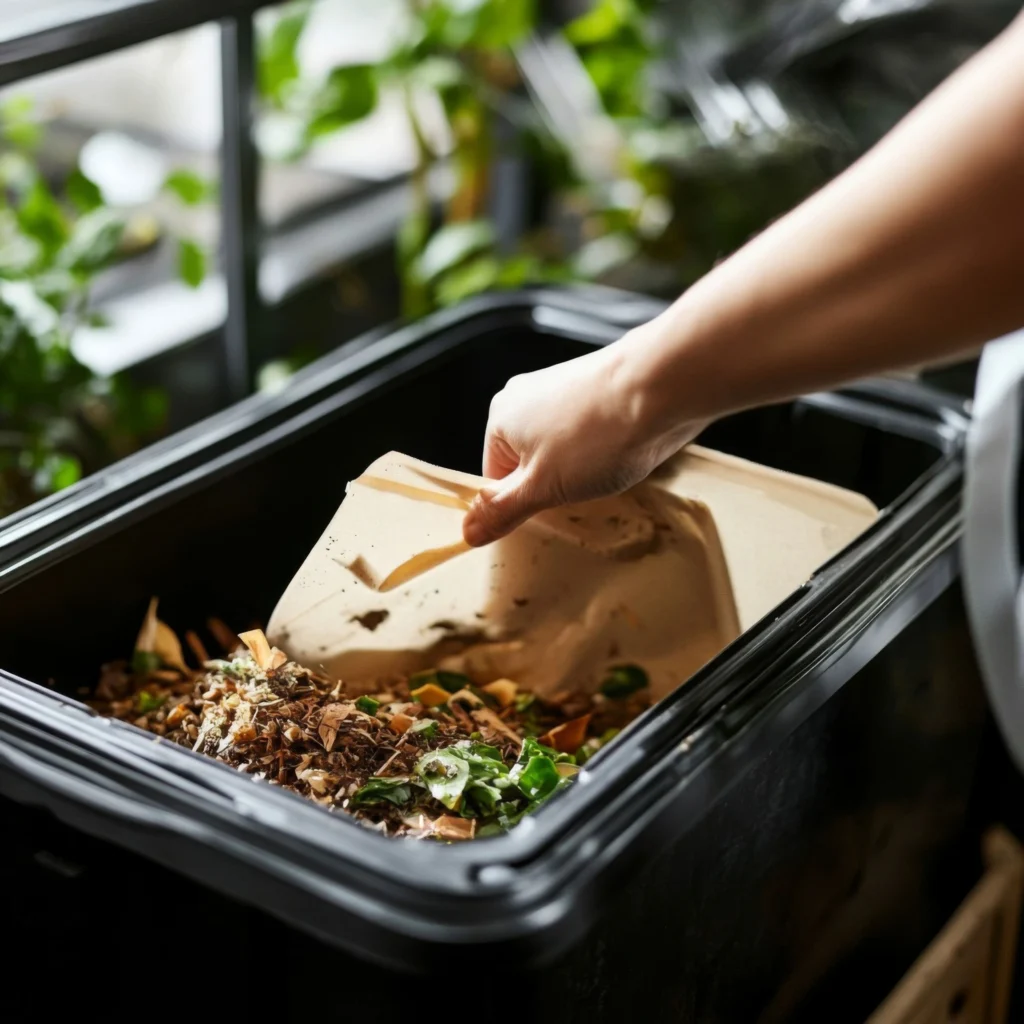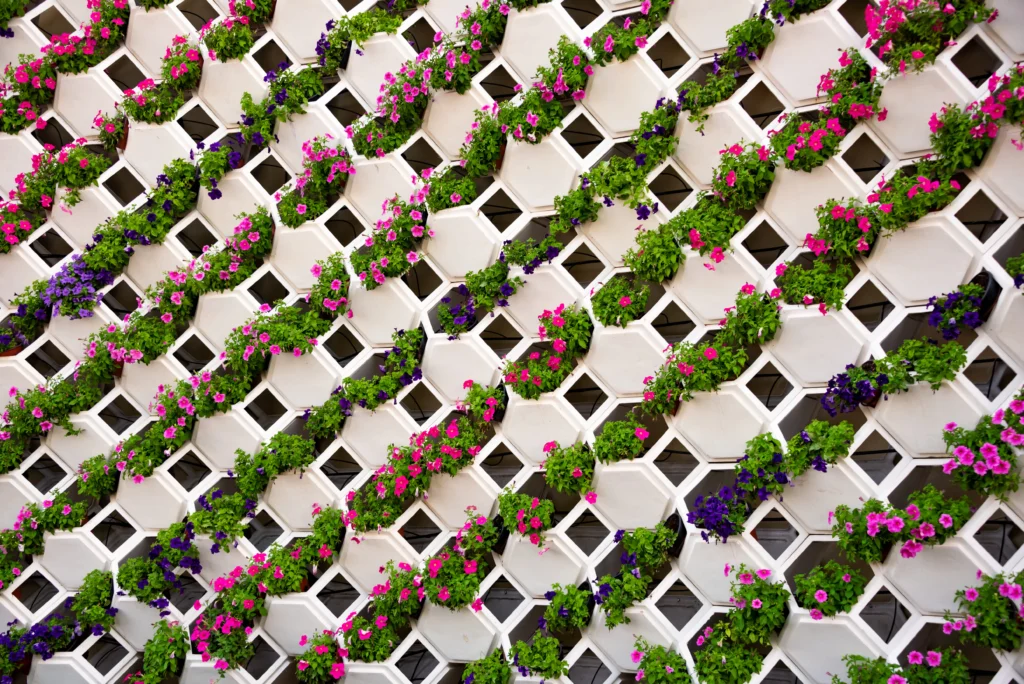Incorporating a self-sustaining vertical garden into your space is an innovative way to combine greenery with eco-friendly living. By recycling water, reusing nutrients, and selecting the right plants, you can create a garden that thrives with minimal maintenance.
Imagine a garden that waters itself, feeds itself, and grows with minimal effort.
That’s it the dream Sarah, a marketing professional living in a small apartment in New York City, while looking at your barren balcony.
Surrounded by concrete and skyscrapers, Sarah longed for greenery, but her busy lifestyle and limited space made traditional gardening nearly impossible.
After multiple failed attempts at keeping potted plants alive, she decided to explore a new solution: a self-sustaining vertical garden.
Her journey wasn’t just about creating a beautiful green space it was about embracing sustainability in the heart of an urban jungle.
With determination and creativity, Sarah turned her balcony into a thriving garden that practically takes care of itself. Let’s follow her steps and learn how to do the same.
Step 1: Choosing the Perfect Spot

Sarah’s first step was identifying where to set up her garden. Living in a high-rise apartment in Manhattan meant space was limited, and sunlight could be tricky. She studied her balcony and found a wall that received 4–6 hours of indirect sunlight daily, making it the ideal location for her garden.
To overcome the challenges of living in a city with less greenery, she decided to invest in LED grow lights to supplement natural light during cloudy days or winter months.
Tip for You: If you’re in a similar urban environment, look for a space that offers consistent light. Indoor walls near windows or shaded balconies can still work with proper lighting.
Step 2: Building the Foundation

Sarah wanted her garden to reflect her eco-conscious values, so she focused on using sustainable materials for its foundation.
- Structure Choice: She chose a freestanding modular vertical system, which was lightweight and mobileperfect for a rental apartment.
- DIY Inspiration: Wanting a personal touch, she also added a DIY herb wall made from recycled wooden pallets.
- Water Recycling: Sarah integrated a drip irrigation system with a small reservoir to catch excess water and recycle it back to the plants.
She knew that every detail counted. By using reclaimed wood and water-efficient systems, she ensured her garden was as sustainable as possible.
Sarah chose a freestanding modular vertical system, which was lightweight and mobile perfect for a rental apartment. If you’re curious about the benefits and options for modular systems, check out Modular Vertical Gardens: The Future of Home Cultivation for inspiration and guidance on creating a personalized garden setup.
Step 3: Creating a Nutrient Cycle

Sarah wanted her garden to produce its own nutrients, reducing reliance on store-bought fertilizers.
- Composting in the City: In her tiny kitchen, Sarah placed a countertop compost bin to recycle vegetable scraps and coffee grounds.
- Compost Tea: She steeped the compost in water to create a natural liquid fertilizer, which she added to the irrigation system.
- Soil Enrichment: She used a mix of high-quality potting soil and compost to keep her plants healthy and thriving.
Sarah laughed as she realized that her morning coffee routine wasn’t just for her anymore it was also fueling her garden.
Step 4: Selecting Resilient Plants

Sarah’s hectic New York schedule meant she needed low-maintenance plants that could thrive in her system. She chose a mix of:
- Herbs: Basil, mint, and parsley were her go-to options for cooking.
- Leafy Greens: Spinach and lettuce offered quick, satisfying harvests.
- Small Vegetables: Cherry tomatoes added color and flavor to her meals.
- Ornamental Plants: Pothos and ferns created a lush, calming atmosphere.
Each plant brought something unique to her garden, from fresh ingredients for her favorite pasta dishes to vibrant greenery that brightened her small space.
Step 5: Assembling the Garden
Sarah’s enthusiasm grew as she began assembling her garden. The process was straightforward:
- Installing the Frame: She secured the modular system to her balcony wall and ensured it was stable.
- Setting Up Irrigation: A simple pump and tubing system made watering effortless.
- Planting: Sarah carefully placed seedlings into the pots, ensuring the roots had plenty of room to grow.
She stepped back and admired her work a blank wall had transformed into a vibrant, living garden.
Watch this step-by-step video to see how to assemble and customize your self-sustaining vertical garden
Step 6: Maintaining a Self-Sustaining System
Despite her busy schedule, Sarah found her garden required surprisingly little maintenance:
- Watering: Once a week, she checked the water reservoir and topped it off using collected rainwater.
- Pruning and Harvesting: She trimmed overgrown plants and harvested herbs and vegetables regularly.
- Pest Control: Using natural neem oil and companion planting, Sarah kept pests at bay without harmful chemicals.
Tip for You: A self-sustaining garden isn’t completely hands-off, but with proper systems in place, you’ll find it incredibly low-maintenance.
Creative Ideas Inspired by Sarah’s Garden

Sarah didn’t stop at the basics she turned her garden into a creative expression of her personality. Here are a few of her top recommendations.
- Living Wall Art: She arranged her plants in geometric patterns to create a stunning visual effect.
- Eco-Friendly Kitchen Garden: Growing herbs and vegetables right outside her kitchen made cooking more sustainable.
- Recycled Design: Old mason jars and tins became charming planters that added character to her garden.
- Aquaponics Experiment: She connected a small fish tank to her system, creating a closed-loop ecosystem where fish waste nourished her plants.
Why a Self-Sustaining Vertical Garden?
Sarah’s journey revealed just how impactful a self-sustaining garden can be. Here’s what she discovered:
- Water Efficiency: The system conserved water by recycling it.
- Minimal Effort: Once set up, the garden practically took care of itself.
- Sustainability: It reduced waste and supported her eco-conscious lifestyle.
- Aesthetic Appeal: Her previously barren balcony became a lush, green retreat.
If you’re inspired by Sarah’s experience and want to dive deeper into the benefits of sustainable vertical gardening, don’t miss detailed guide: Sustainable Vertical Gardens: Benefits and Implementation in Cities. Discover how you can contribute to greener urban spaces while maximizing efficiency and style.
Conclusion: Your Garden, Your Legacy
Sarah’s story is proof that anyone even in the heart of New York City can create a thriving, self-sustaining vertical garden. Her journey transformed not just her balcony but her perspective on sustainable living.
Now it’s your turn. Whether you’re working with a small wall or an entire balcony, the principles of a self-sustaining vertical garden can bring life, color, and sustainability to your space.
Start your project today and enjoy the rewards of a greener, more conscious lifestyle.

